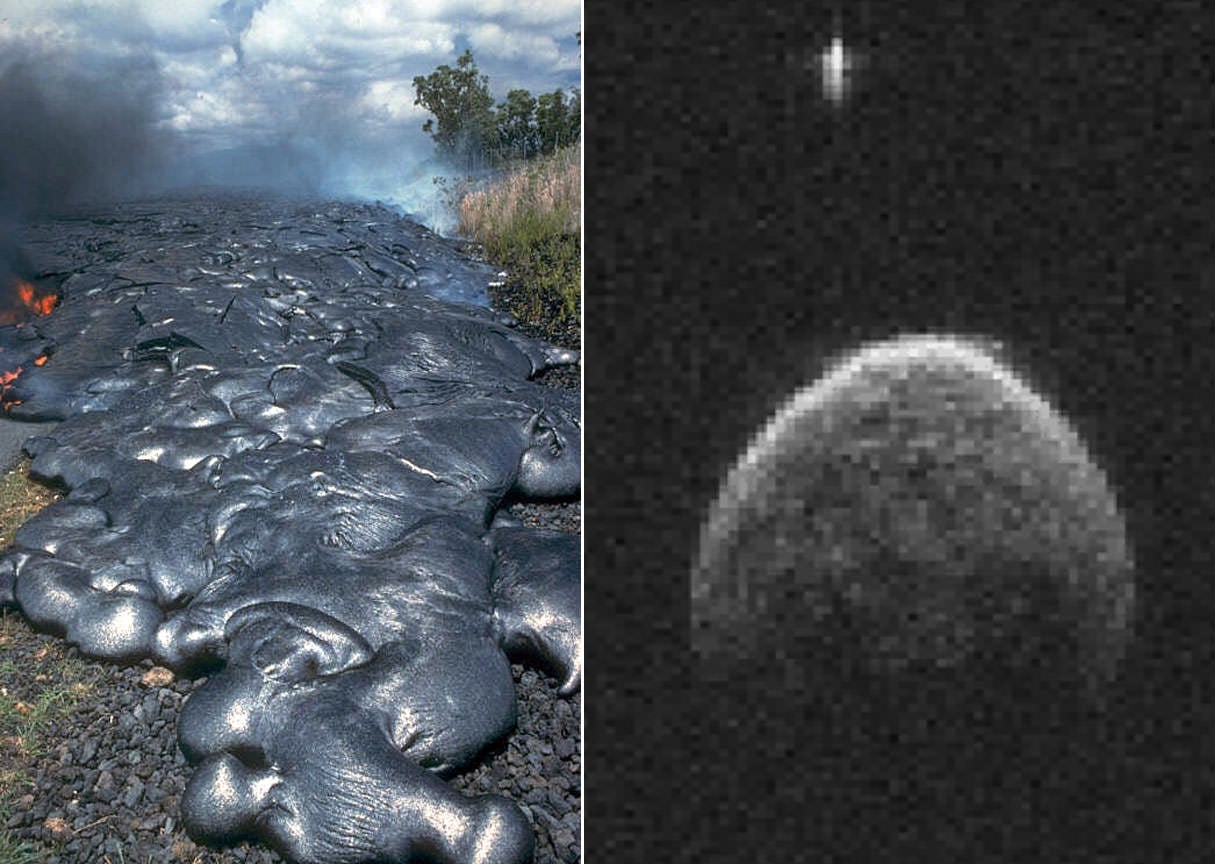At first glance, you wouldn't think Hawaii has any connection at all with asteroid 2004 BL
86
, the one that missed Earth by 750,000 miles (1.2 million km) just 3 days ago. One's a tropical paradise with nightly pig roasts, beaches and shave ice; the other an uninhabitable ball of bare rock untouched by floral print swimsuits.
But Planetary Science Institute researchers Vishnu Reddy and Driss Takir would beg to differ.
Using NASA's
Infrared Telescope Facility
on Mauna Kea, Hawaii they discovered that the speedy "space mountain" has a composition similar to the very island from which they made their observations - basalt.
"Our observations show that this asteroid has a spectrum similar to V-type asteroids," said Reddy. "V-type asteroids are basalt, similar in composition to lava flows we see in Hawaii.
[caption id="attachment_118618" align="aligncenter" width="580"]
Minerals on the surface of an object like the moon or an asteroid absorb wavelengths of light to create a series of "blank spaces" or absorption lines that are unique to a particular element or compound. Credit: NASA[/caption]
The researchers used a spectrograph to study infrared sunlight reflected from 2004 BL
86
during the flyby. A
spectrograph
splits light into its component colors like the deli guy slicing up a nice salami. Among the colors are occasional empty spaces or what astronomers call absorption lines, where minerals such as olivine, pyroxene and plagioclase on the asteroid's surface have removed or absorbed particular slices of sunlight.
[caption id="attachment_118619" align="aligncenter" width="580"]
You're looking straight down into the 310-mile-wide (500 km) Rheasilvea crater / impact basin on the asteroid Vesta. It's though that many of the Vesta-like asteroids, including 2004 BL
86
, originated from the impact. It Credit: NASA/JPL-Caltech/UCLA/MPS/DLR/IDA[/caption]
These are the same materials that not only compose earthly basalts - all that dark volcanic rock that underlies Hawaii's reefs and resorts - but also
Vesta
, considered the source of
V-type asteroids
. It's thought that the impact that hollowed out the vast Rheasilvia crater at Vesta's south pole blasted chunks of mama asteroid into space to create a family of smaller siblings called vestoids.
[caption id="attachment_118507" align="aligncenter" width="440"]
This animation, created from individual radar images, shows the binary asteroid 2004 BL86 on January 26th. The moon's orbital period is about 13.8 hours. Credit: NASA/JPL-Caltech[/caption]
So it would appear that 2004 BL
86
could be a long-lost daughter born through impact and released into space to later be perturbed by Jupiter into an orbit that periodically brings it near Earth. Close enough to watch in wonder as it inches across the field of view of our telescopes like it did earlier this week.
The little moonlet may or may not be related to Vesta, but its presence makes 2004 BL
86
a binary asteroid, where each object revolves about their common center of gravity. While the asteroid is unlikely to become future vacation destination, there will always be Hawaii to satisfy our longings for basalt.
 Universe Today
Universe Today
